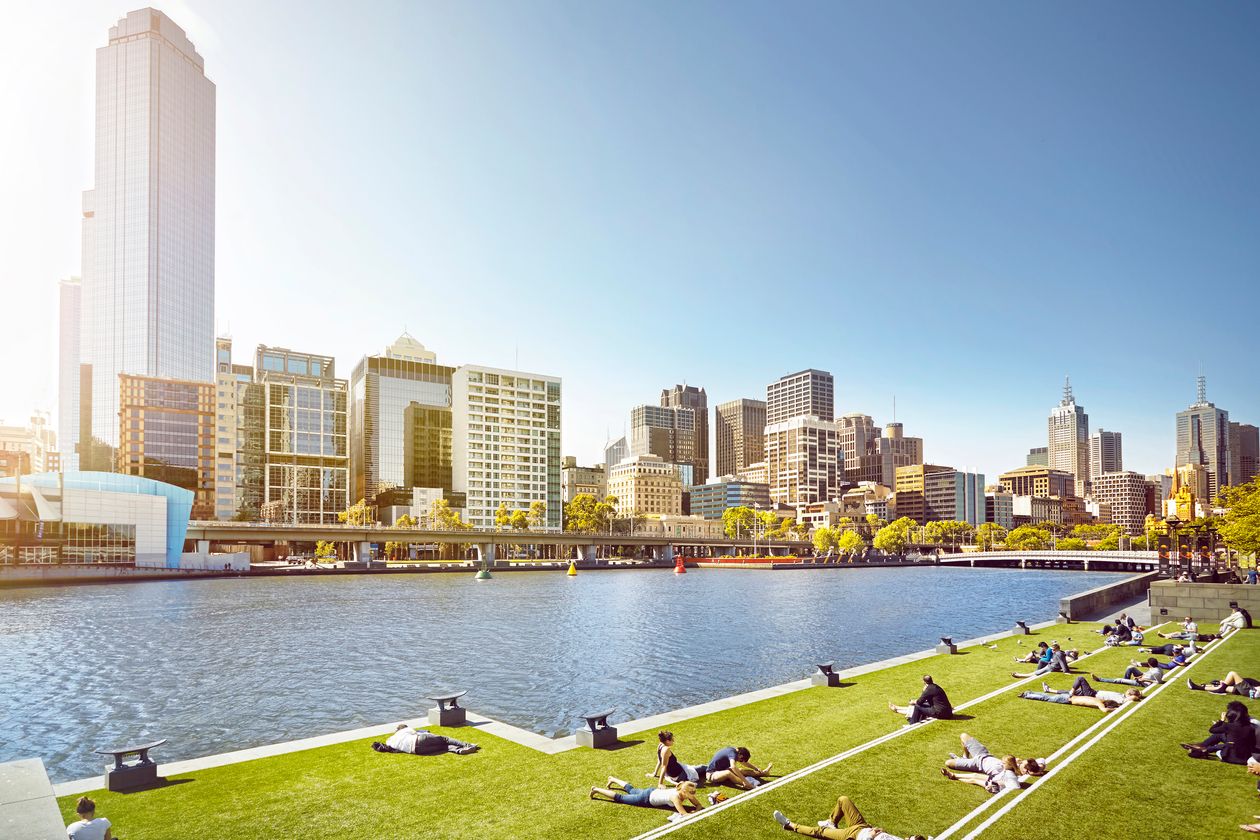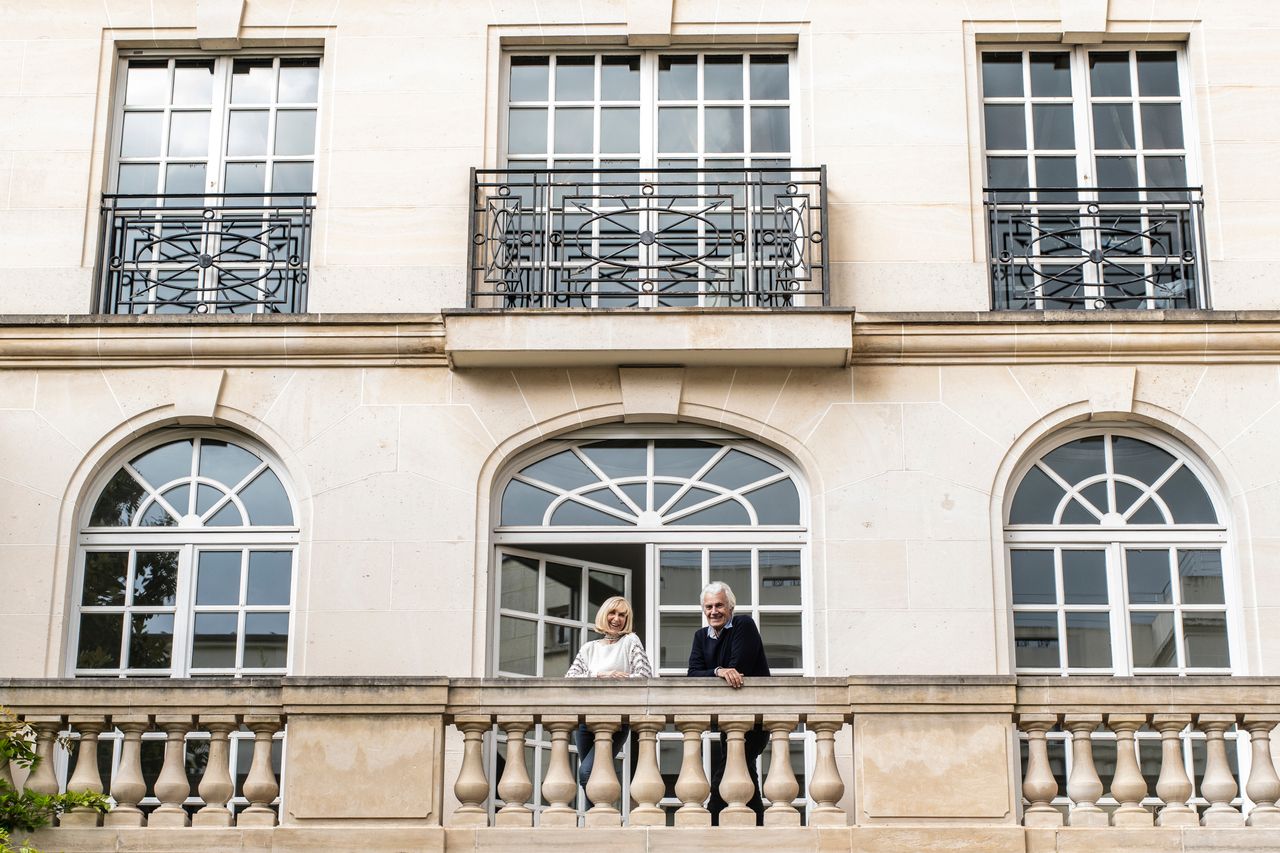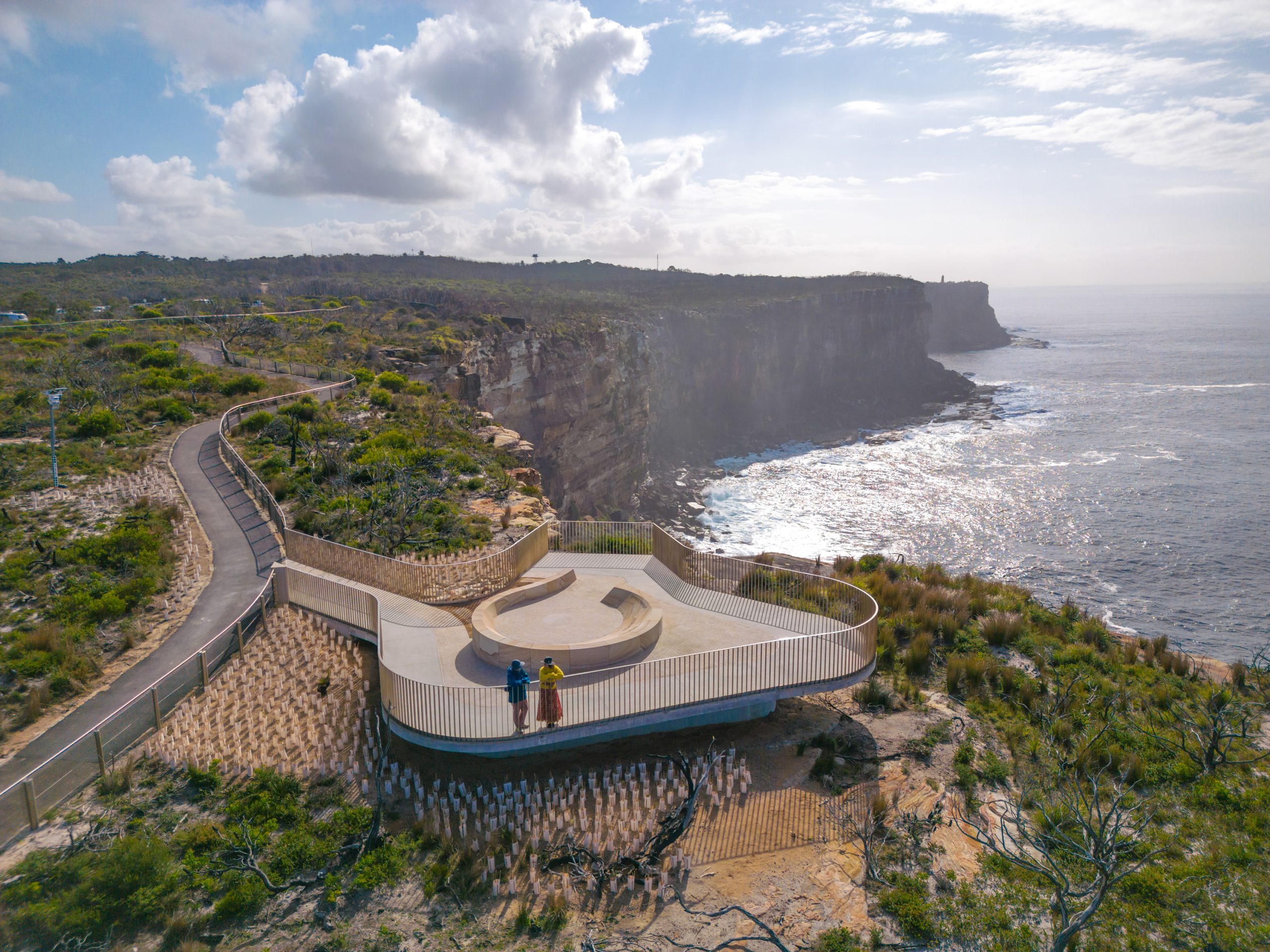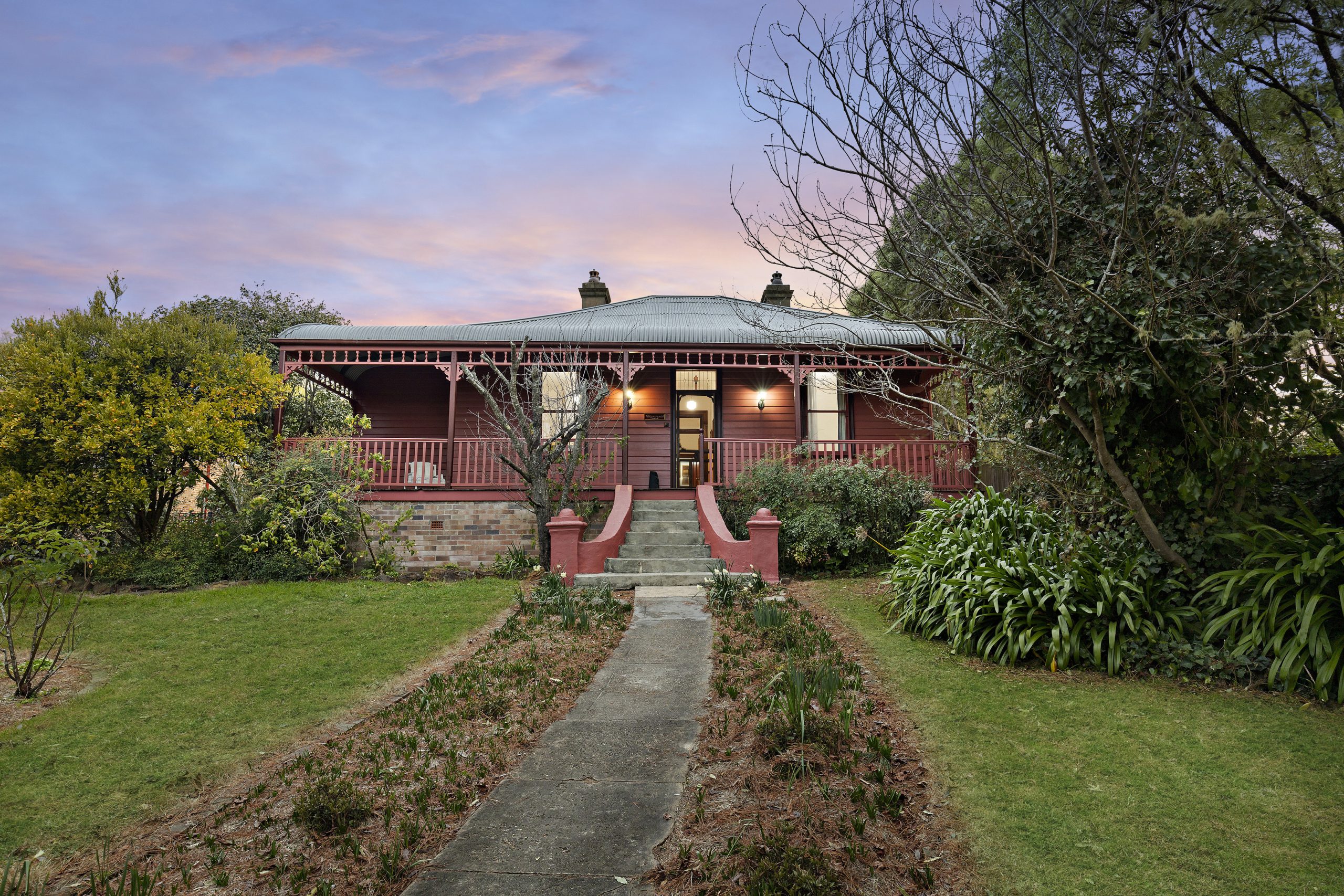Australia Prepares for a Post-Pandemic Population Boom
Property experts say a rush of people will come as soon as border restrictions ease.
Australia’s international borders were snapped shut with the arrival of Covid-19 in March 2020, and more than a year later our island nation is still closed to new arrivals. As a result, the country, which relies heavily on overseas migration to boost its economy and housing market, has experienced its first negative population growth in more than a century.
One year into the pandemic, Australia’s migrant stock was 300,000 people fewer than it would have been, coupled by a net migration decline of 97,000 people, according to Federal budget estimates.
By 2030, the Australian government estimates the country will be “missing” 1 million new people. As of June 2020, the Australian Bureau of Statistics recorded that there were more than 7.6 million migrants living in Australia, with 29.8% of the total population born in another country. England was the largest group of overseas-born migrants at 980,400, followed by those born in India at 721,000 and then Chinese migrants third at 650,600.
The hit to Australia’s population growth rate is already taking its toll on some parts of the property market, particularly inner city apartments. However, when borders do reopen, property and population experts predict that Australia’s successful and vigilant handling of the pandemic—Victoria instated Thursday a weeklong statewide lockdown in response to a cluster of only two-dozen or so cases—and its rebounding economy will attract the attention of cashed-up migrants and foreigners seeking out shrewd investments.
Understanding the Migration Equation
In the Federal Budget announced earlier this month, the government hinted at a “gradual return” to temporary or permanent migration, but no sooner than mid-2022. As a result, Australia’s population is predicted to be about 25.88 million by the end of next year.
Tim Lawless, head of research for property data firm CoreLogic, said the long-term impact of this blow to Australia’s population growth will be multilayered.
“If the Treasury forecasts are right, this means the rate of population growth will be the lowest since 1917. This will be disruptive to housing demand. However, the impact will not be evenly spread,” he explained.
“We need to consider the composition of housing demand. In the last few years at least, about 70% of migration has been temporary; it’s been students and visitors. And about 30% have been permanent migrants,” he continued. “Temporary migrants will usually rent, and even permanent arrivals typically rent before they buy anyway, so there’s always been a bit of a lag.”
As a result, inner city vacancy rates soared and rents dropped, particularly in Sydney and Melbourne where most new arrivals initially land. A return of both temporary and permanent migrants would create an immediate demand throughout metropolitan rental markets and provide opportunities for investors coming back into the market.
Savvy Investors Will Be Ready for Open Borders
Simon Keustenmacher, social demographer and co-founder of Melbourne-based demographic advisory firm The Demographics Group, said Australia’s big city mayors and property developers are keen to reignite inner cities post-pandemic.
“The inner city rental market of relatively small dwellings—one or two bedroom apartments—has suffered because there are no new arrivals or international students. The more you can get to come, the more everyone will get out of it because they just invigorate these areas and put capital back into the economy,” he said.
Although no one knows yet how many temporary and permanent migrants Australia will welcome, or when, Mr. Keustenmacher is sure housing demand will skyrocket when they do.
“People will want to come to Australia at a much higher rate than we will take people in, I’m certain,” he said, adding that it’s especially true of the top end of the income spectrum. “More and more migrants will want to come to Australia because they’re thinking, ‘Where can I have the best lifestyle?’”
Mr. Keustenmacher said he envisaged Australia’s skilled migration list becoming shorter and more specific. Those highly skilled, well-paid workers who do arrive in Australia will have an additional challenge when seeking a home as they will be in direct competition with another huge slice of the population.
“Plenty of those high-income earners arriving in Australia will be in the family stage of their lifecycle so they’ll be competing for the most sought after property—three- and four-bedroom houses. Demographically speaking, that’s the hottest market to be in because Australia’s millennials, who are also in the family stage of life, are our biggest generation right now,” he explained.
“Therefore, if people buy purely for investment they should buy whatever property is deemed to be rare, because prices will be driven up,” he said.
Things Could Go From Good, to Even Better
Despite unprecedented negative population growth, Australia’s dwelling values did not suffer throughout the second half of 2020 and into the first quarter of 2021. On the contrary, in March alone, CoreLogic’s national home value index recorded a 2.8% increase, the fastest pace of monthly growth in 32 years.
John McGrath, founder of Australia-wide realtor group McGrath Real Estate, said when new arrivals return, housing demand is likely to increase even further.
“Whilst the current surge in local demand and property values will no doubt plateau in the near future as the inevitable buyer fatigue calms things down, international borders opening up will be the next catalyst for price growth,” he said.
During the height of the pandemic in mid-2020, real estate agents across Australia noted a sharp uptick in inquiry from Australians living overseas hoping to return home, or at least invest on home soil.
“We have already sold a number of properties to expats sight unseen off the internet over the past 12 months, but this will escalate rapidly as borders open,” he said.
To date, a wave of international interest in Australia’s luxury properties close to beaches or in rural settings has put upward price pressure on lifestyle locations, and Mr. McGrath said he believes that will inevitably create a trickle-down effect.
“While much of the demand will find its way to higher priced homes upward of $10 million , I expect we will see buying across all price ranges as people seek to migrate to Australia,” he said. “Traditionally, the vast majority of these immigrants investing into Australia have focused on Sydney and Melbourne, but due to lifestyle and workplace changes post-COVID we should see a wider spread of investment including many regional lifestyle areas.”
Waves, Wine and Wool
Three types of lifestyle markets have been highly sought after since the pandemic forced individuals to reconsider their priorities and work-life balance. Beach locations, wine regions and rural estates have all been hot property.
“Some of the really high-profile lifestyle markets would probably be on the radar for returning expats, or foreign migrants,” Mr. Lawless said. “If we do see more migrants arriving, or expats returning, a lot of them will be looking at not just Sydney or Melbourne, but also the likes of Byron Bay, Noosa or the Mornington Peninsula.”
A shift to remote working has meant these areas, some of which are hundreds of miles from employment hubs in the cities, are no longer disadvantaged by long commute times.
People Can’t Travel to Australia, but Money Can
The fact that international borders are closed isn’t holding back keen foreign investors who are playing the long property game.
“They don’t even need to move to Australia right now. Currency and capital can still flow across the border,” Mr. Lawless said.
“Expats or potentially foreign buyers would be looking at Australian real estate because it’s a pretty good investment at the moment. It’s on a strong capital gain trajectory and considering where mortgage rates are, it’s also relatively high yielding,” he explained.
Australian expats can buy established property, though foreign investors or potential migrants are restricted to purchasing new properties or buying land with the purpose of building a home, according to Australia’s Foreign Investment Review Board guidelines.
“There is limited availability for newly built apartments in some areas as construction is starting to wind down, but if you looked around Sydney and Melbourne, there are still plenty of apartments underway,” he said.
“We’ll see a few years down the track, considering how Australia has managed Covid-19 as well as just the sheer liveability of Australia, that this is going to be a very popular place. If I wasn’t in Australia I’d certainly want to be, put it that way,” Mr. Lawless said.
Reprinted by permission of Mansion Global. Copyright 2021 Dow Jones & Company. Inc. All Rights Reserved Worldwide. Original date of publication: May 30, 2021
 Copyright 2020, Dow Jones & Company, Inc. All Rights Reserved Worldwide. LEARN MORE
Copyright 2020, Dow Jones & Company, Inc. All Rights Reserved Worldwide. LEARN MORE
This stylish family home combines a classic palette and finishes with a flexible floorplan
Just 55 minutes from Sydney, make this your creative getaway located in the majestic Hawkesbury region.
Ahead of the Games, a breakdown of the city’s most desirable places to live
PARIS —Paris has long been a byword for luxurious living. The traditional components of the upscale home, from parquet floors to elaborate moldings, have their origins here. Yet settling down in just the right address in this low-rise, high-density city may be the greatest luxury of all.
Tradition reigns supreme in Paris real estate, where certain conditions seem set in stone—the western half of the city, on either side of the Seine, has long been more expensive than the east. But in the fashion world’s capital, parts of the housing market are also subject to shifting fads. In the trendy, hilly northeast, a roving cool factor can send prices in this year’s hip neighborhood rising, while last year’s might seem like a sudden bargain.
This week, with the opening of the Olympic Games and the eyes of the world turned toward Paris, The Wall Street Journal looks at the most expensive and desirable areas in the City of Light.
The Most Expensive Arrondissement: the 6th
Known for historic architecture, elegant apartment houses and bohemian street cred, the 6th Arrondissement is Paris’s answer to Manhattan’s West Village. Like its New York counterpart, the 6th’s starving-artist days are long behind it. But the charm that first wooed notable residents like Gertrude Stein and Jean-Paul Sartre is still largely intact, attracting high-minded tourists and deep-pocketed homeowners who can afford its once-edgy, now serene atmosphere.
Le Breton George V Notaires, a Paris notary with an international clientele, says the 6th consistently holds the title of most expensive arrondissement among Paris’s 20 administrative districts, and 2023 was no exception. Last year, average home prices reached $1,428 a square foot—almost 30% higher than the Paris average of $1,100 a square foot.
According to Meilleurs Agents, the Paris real estate appraisal company, the 6th is also home to three of the city’s five most expensive streets. Rue de Furstemberg, a secluded loop between Boulevard Saint-Germain and the Seine, comes in on top, with average prices of $2,454 a square foot as of March 2024.
For more than two decades, Kyle Branum, a 51-year-old attorney, and Kimberly Branum, a 60-year-old retired CEO, have been regular visitors to Paris, opting for apartment rentals and ultimately an ownership interest in an apartment in the city’s 7th Arrondissement, a sedate Left Bank district known for its discreet atmosphere and plutocratic residents.
“The 7th was the only place we stayed,” says Kimberly, “but we spent most of our time in the 6th.”
In 2022, inspired by the strength of the dollar, the Branums decided to fulfil a longstanding dream of buying in Paris. Working with Paris Property Group, they opted for a 1,465-square-foot, three-bedroom in a building dating to the 17th century on a side street in the 6th Arrondissement. They paid $2.7 million for the unit and then spent just over $1 million on the renovation, working with Franco-American visual artist Monte Laster, who also does interiors.
The couple, who live in Santa Barbara, Calif., plan to spend about three months a year in Paris, hosting children and grandchildren, and cooking after forays to local food markets. Their new kitchen, which includes a French stove from luxury appliance brand Lacanche, is Kimberly’s favourite room, she says.
Another American, investor Ashley Maddox, 49, is also considering relocating.
In 2012, the longtime Paris resident bought a dingy, overstuffed 1,765-square-foot apartment in the 6th and started from scratch. She paid $2.5 million and undertook a gut renovation and building improvements for about $800,000. A centrepiece of the home now is the one-time salon, which was turned into an open-plan kitchen and dining area where Maddox and her three children tend to hang out, American-style. Just outside her door are some of the city’s best-known bakeries and cheesemongers, and she is a short walk from the Jardin du Luxembourg, the Left Bank’s premier green space.
“A lot of the majesty of the city is accessible from here,” she says. “It’s so central, it’s bananas.” Now that two of her children are going away to school, she has listed the four-bedroom apartment with Varenne for $5 million.
The Most Expensive Neighbourhoods: Notre-Dame and Invalides
Garrow Kedigian is moving up in the world of Parisian real estate by heading south of the Seine.
During the pandemic, the Canada-born, New York-based interior designer reassessed his life, he says, and decided “I’m not going to wait any longer to have a pied-à-terre in Paris.”
He originally selected a 1,130-square-foot one-bedroom in the trendy 9th Arrondissement, an up-and-coming Right Bank district just below Montmartre. But he soon realised it was too small for his extended stays, not to mention hosting guests from out of town.
After paying about $1.6 million in 2022 and then investing about $55,000 in new decor, he put the unit up for sale in early 2024 and went house-shopping a second time. He ended up in the Invalides quarter of the 7th Arrondissement in the shadow of one Paris’s signature monuments, the golden-domed Hôtel des Invalides, which dates to the 17th century and is fronted by a grand esplanade.
His new neighbourhood vies for Paris’s most expensive with the Notre-Dame quarter in the 4th Arrondissement, centred on a few islands in the Seine behind its namesake cathedral. According to Le Breton, home prices in the Notre-Dame neighbourhood were $1,818 a square foot in 2023, followed by $1,568 a square foot in Invalides.
After breaking even on his Right Bank one-bedroom, Kedigian paid $2.4 million for his new 1,450-square-foot two-bedroom in a late 19th-century building. It has southern exposures, rounded living-room windows and “gorgeous floors,” he says. Kedigian, who bought the new flat through Junot Fine Properties/Knight Frank, plans to spend up to $435,000 on a renovation that will involve restoring the original 12-foot ceiling height in many of the rooms, as well as rescuing the ceilings’ elaborate stucco detailing. He expects to finish in 2025.
Over in the Notre-Dame neighbourhood, Belles demeures de France/Christie’s recently sold a 2,370-square-foot, four-bedroom home for close to the asking price of about $8.6 million, or about $3,630 a square foot. Listing agent Marie-Hélène Lundgreen says this places the unit near the very top of Paris luxury real estate, where prime homes typically sell between $2,530 and $4,040 a square foot.
The Most Expensive Suburb: Neuilly-sur-Seine
The Boulevard Périphérique, the 22-mile ring road that surrounds Paris and its 20 arrondissements, was once a line in the sand for Parisians, who regarded the French capital’s numerous suburbs as something to drive through on their way to and from vacation. The past few decades have seen waves of gentrification beyond the city’s borders, upgrading humble or industrial districts to the north and east into prime residential areas. And it has turned Neuilly-sur-Seine, just northwest of the city, into a luxury compound of first resort.
In 2023, Neuilly’s average home price of $1,092 a square foot made the leafy, stately community Paris’s most expensive suburb.
Longtime residents, Alain and Michèle Bigio, decided this year is the right time to list their 7,730-square-foot, four-bedroom townhouse on a gated Neuilly street.
The couple, now in their mid 70s, completed the home in 1990, two years after they purchased a small parcel of garden from the owners next door for an undisclosed amount. Having relocated from a white-marble château outside Paris, the couple echoed their previous home by using white- and cream-coloured stone in the new four-story build. The Bigios, who will relocate just back over the border in the 16th Arrondissement, have listed the property with Emile Garcin Propriétés for $14.7 million.
The couple raised two adult children here and undertook upgrades in their empty-nester years—most recently, an indoor pool in the basement and a new elevator.
The cool, pale interiors give way to dark and sardonic images in the former staff’s quarters in the basement where Alain works on his hobby—surreal and satirical paintings, whose risqué content means that his wife prefers they stay downstairs. “I’m not a painter,” he says. “But I paint.”
The Trendiest Arrondissement: the 9th
French interior designer Julie Hamon is theatre royalty. Her grandfather was playwright Jean Anouilh, a giant of 20th-century French literature, and her sister is actress Gwendoline Hamon. The 52-year-old, who divides her time between Paris and the U.K., still remembers when the city’s 9th Arrondissement, where she and her husband bought their 1,885-square-foot duplex in 2017, was a place to have fun rather than put down roots. Now, the 9th is the place to do both.
The 9th, a largely 19th-century district, is Paris at its most urban. But what it lacks in parks and other green spaces, it makes up with nightlife and a bustling street life. Among Paris’s gentrifying districts, which have been transformed since 2000 from near-slums to the brink of luxury, the 9th has emerged as the clear winner. According to Le Breton, average 2023 home prices here were $1,062 a square foot, while its nearest competitors for the cool crown, the 10th and the 11th, have yet to break $1,011 a square foot.
A co-principal in the Bobo Design Studio, Hamon—whose gut renovation includes a dramatic skylight, a home cinema and air conditioning—still seems surprised at how far her arrondissement has come. “The 9th used to be well known for all the theatres, nightclubs and strip clubs,” she says. “But it was never a place where you wanted to live—now it’s the place to be.”
With their youngest child about to go to college, she and her husband, 52-year-old entrepreneur Guillaume Clignet, decided to list their Paris home for $3.45 million and live in London full-time. Propriétés Parisiennes/Sotheby’s is handling the listing, which has just gone into contract after about six months on the market.
The 9th’s music venues were a draw for 44-year-old American musician and piano dealer, Ronen Segev, who divides his time between Miami and a 1,725-square-foot, two-bedroom in the lower reaches of the arrondissement. Aided by Paris Property Group, Segev purchased the apartment at auction during the pandemic, sight unseen, for $1.69 million. He spent $270,000 on a renovation, knocking down a wall to make a larger salon suitable for home concerts.
During the Olympics, Segev is renting out the space for about $22,850 a week to attendees of the Games. Otherwise, he prefers longer-term sublets to visiting musicians for $32,700 a month.
Most Exclusive Address: Avenue Junot
Hidden in the hilly expanses of the 18th Arrondissement lies a legendary street that, for those in the know, is the city’s most exclusive address. Avenue Junot, a bucolic tree-lined lane, is a fairy-tale version of the city, separate from the gritty bustle that surrounds it.
Homes here rarely come up for sale, and, when they do, they tend to be off-market, or sold before they can be listed. Martine Kuperfis—whose Paris-based Junot Group real-estate company is named for the street—says the most expensive units here are penthouses with views over the whole of the city.
In 2021, her agency sold a 3,230-square-foot triplex apartment, with a 1,400-square-foot terrace, for $8.5 million. At about $2,630 a square foot, that is three times the current average price in the whole of the 18th.
Among its current Junot listings is a 1930s 1,220-square-foot townhouse on the avenue’s cobblestone extension, with an asking price of $2.8 million.
This stylish family home combines a classic palette and finishes with a flexible floorplan
Just 55 minutes from Sydney, make this your creative getaway located in the majestic Hawkesbury region.






















